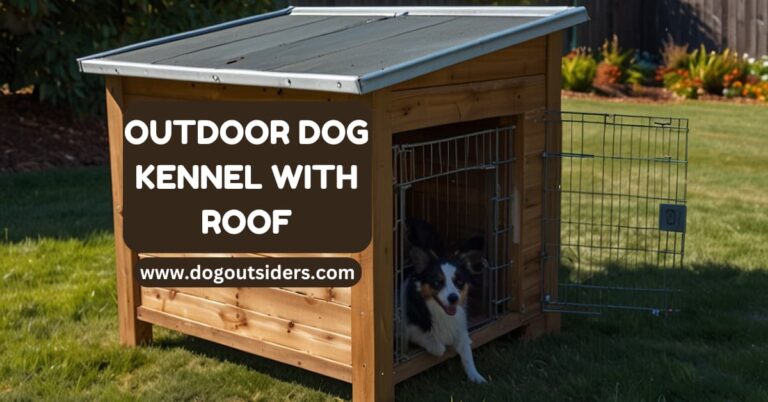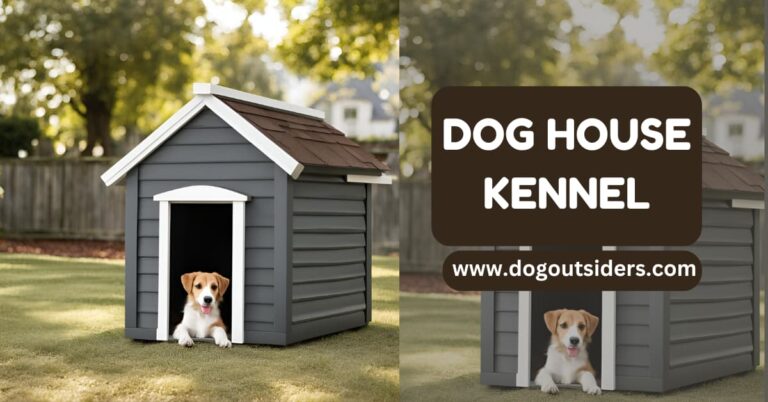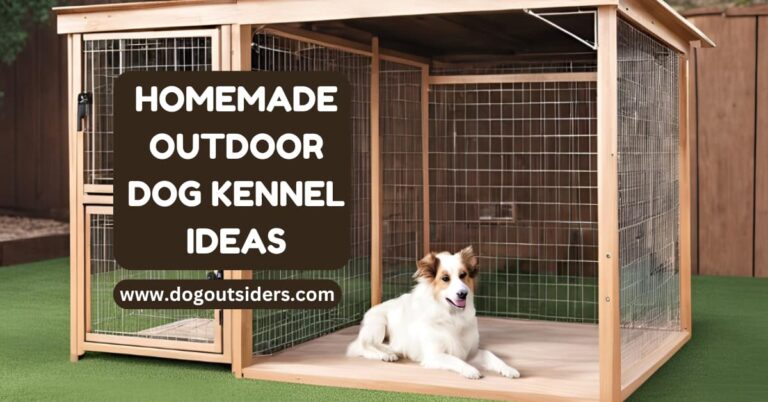Did you know that 56% of dog owners leave their furry friends outside in a kennel while they are away? When deciding “what to put in dog kennel outside“, comfort and safety are key. I’ll share essential tips on creating a cozy outdoor space for your pup, from providing shelter and bedding to ensuring access to food and water. Your dog’s well-being matters, even when they’re outdoors, so let’s make sure their kennel is a place they love to relax in. Stay tuned for practical advice on making your dog’s outdoor area a comfortable retreat.
Key Takeaways
- Choose the right shelter, bedding, and toys to provide your dog with a comfortable and safe environment in the outdoor kennel.
- Ensure your dog has access to fresh water and food supplies at all times to promote their well-being and hydration.
- Implement safety measures such as secure locks, sturdy construction, and supervision to prevent accidents or escapes.
- Protect your dog from harsh weather conditions by providing adequate weather protection, such as shade from the sun and insulation from cold temperatures.
- Regularly clean the kennel using appropriate cleaning essentials to maintain a hygienic environment for your dog’s health.
- Conduct routine maintenance checks to address any repairs or issues promptly and keep the outdoor kennel in good condition.
Understanding the Basics

Proper Sizing
When setting up a dog kennel outside, it is crucial to ensure that the size of the kennel is appropriate for your dog’s comfort and safety. Ideally, the kennel should be large enough for your dog to stand up, turn around, and lie down comfortably.
Location Selection
The location of the dog kennel plays a significant role in your dog’s well-being. Selecting a spot that provides ample shade, protection from harsh weather conditions, and good drainage is essential. Placing the kennel on level ground can prevent water pooling inside during rainy days.
Maintenance Tips
Regularly inspecting the kennel for wear and tear can help identify any issues early on. Keeping the kennel clean by removing waste promptly and providing fresh bedding can promote a healthy environment for your dog. Reinforcing any weak spots or gaps in the structure can prevent escape attempts.
Personal Experience
I have found that placing my dog’s kennel in an area with good visibility allows me to keep an eye on him easily. This setup also helps my dog feel connected to our family while being outdoors. Moreover, adding some toys or interactive elements inside the kennel can keep your dog engaged and entertained.
Choosing the Right Shelter
Stainless Steel
High-gauge stainless steel is an excellent choice for outdoor kennels due to its durability and resistance to corrosion. This material ensures longevity and easy maintenance, making it a reliable option for housing your dog.
When considering materials for your dog’s shelter, stainless steel stands out for its robustness and ability to withstand various weather conditions. Its strength provides a secure environment for your pet, offering peace of mind knowing they are safe.
Raised Floors
Raised floors in a dog kennel offer numerous advantages, including improved ventilation and drainage. Elevating the floor helps prevent water accumulation during rainy seasons, keeping your dog dry and comfortable.
By opting for a kennel with raised floors, you provide your dog with a clean and hygienic living space. The elevated platform allows air to circulate underneath, reducing moisture buildup and potential health hazards.
Shelter Design
The design of the shelter plays a crucial role in ensuring your dog’s comfort and safety. A well-thought-out kennel design should prioritize insulation, adequate ventilation, and protection from extreme temperatures to keep your furry friend healthy.
When constructing or selecting a dog kennel, consider factors such as roof overhangs to provide shade, proper insulation for warmth in colder months, and sufficient airflow for cooling during hot days. These elements contribute significantly to your pet’s well-being.
Essential Bedding Options
Pea Gravel
Pea gravel is an excellent bedding option for outdoor dog kennels. It provides a comfortable surface for your dog to rest and play on. This type of bedding allows for proper drainage, keeping the area dry and clean.
Pea
Using pea as bedding in your dog kennel offers a soft and cushioned surface for your furry friend. It is gentle on their paws and helps in maintaining warmth during colder weather. Pea also aids in reducing odors and is easy to clean.
When setting up your dog’s outdoor kennel, consider the benefits of pea gravel. Its small, rounded stones are comfortable for dogs to walk on and provide good traction. Pea gravel promotes hygiene by allowing urine to drain through easily, preventing puddles that can lead to bacterial growth.
Importance of Comfortable Bedding
Providing comfortable bedding in your dog’s kennel is crucial for their well-being. Comfortable bedding helps prevent pressure sores and calluses, especially in older or larger dogs. It also gives them a cozy spot to relax after playtime.
Adequate bedding contributes to your dog’s overall health by offering insulation from cold surfaces and protecting their joints. Consider adding blankets or mats on top of the pea gravel or pea, providing an extra layer of comfort for your pet.
Well-being Benefits
The right bedding can significantly impact your dog’s mental and physical health. Dogs need a soft, supportive surface to rest on, promoting better sleep quality and overall happiness. By choosing suitable bedding options like pea gravel or pea, you create a safe environment that encourages relaxation. Ensuring your dog has a comfortable resting place can alleviate stress and anxiety, leading to improved behavior and temperament.
Water and Food Supplies
Adequate Provision
Ensuring proper water drainage in the kennel is crucial to prevent mud buildup, especially after rain. Providing a raised platform for food and water bowls can help avoid contamination from solid waste.
Having a designated area for feeding and watering can promote cleanliness within the kennel, reducing the chances of waste accumulation. Implementing a rotational system for feeder bowls ensures easy access to fresh food and water.
Seasonal Considerations
Incorporating warmers during winter can help maintain the ideal temperature for your pet’s water supply, preventing freezing. Similarly, offering shade structures during summer protects the food and water from excessive heat.
Installing a sand base in the feeding area can aid in the quick cleanup of spills and accidental restroom incidents. This promotes hygiene and minimizes odor within the kennel environment.
Toys for Entertainment

Types
When selecting toys for your dog’s outdoor kennel, opt for items that are engaging and durable. Look for toys that can withstand outdoor conditions, such as weather-resistant materials.
Benefits
Toys play a crucial role in keeping puppies entertained and mentally stimulated, preventing boredom, which can lead to destructive behavior. They also help in reducing fear and anxiety in dogs by providing a sense of comfort and security.
Examples
- Chew toys: Ideal for teething puppies and dogs that love to gnaw.
- Interactive toys: Keep your dog mentally sharp with puzzles and treat-dispensing toys.
- Fetch toys: Perfect for active breeds who enjoy running around and playing fetch.
When it comes to selecting toys for your dog’s outdoor kennel, consider the specific needs and preferences of your furry companion. Providing a variety of toys can keep them engaged and happy while spending time outdoors.
Safety Measures
Secure Locks
When securing your dog kennel outside, ensure that all locks are sturdy and resistant to tampering. Use padlocks or combination locks for added security.
Gate Protection
Installing a chain link gate with a secure latch is crucial to prevent any accidental escapes by your furry friend. Check the gate regularly for any signs of wear and tear.
I always make sure to double-check the gate’s locking mechanism before leaving my dog in the kennel. It gives me peace of mind knowing that my pet is safe and secure.
Avoiding Hazards
Keep the kennel away from high-traffic areas to minimize stress on your dog. Ensure there are no sharp objects or toxic plants within reach inside or around the kennel perimeter.
Placing the kennel at least a few inches above ground level can help prevent flooding during heavy rains. This simple elevation can make a big difference in keeping your pet dry and comfortable.
Pros:
- Enhanced security for your dog
- Peace of mind knowing your pet is safe
Cons:
- Regular maintenance is required for locks and gates
- Potential challenges in finding suitable locations away from traffic areas
Remember to regularly inspect the kennel’s surroundings for any potential risks or hazards. By taking these safety measures seriously, you can create a secure and comfortable outdoor space for your beloved pet.
Weather Protection
Shade
Providing shade in your dog kennel is essential, especially during hot summers. Dogs can easily overheat when exposed to direct sunlight for extended periods. Placing the kennel under a tree or using a canopy can offer protection from the sun’s harsh rays.
I always make sure to have a sturdy canopy set up over my dog’s outdoor kennel during the summer months. It not only provides shade but also keeps the area cooler, ensuring my furry friend stays comfortable.
Insulation
When preparing a dog kennel for the outdoors, insulation is crucial, especially in colder climates. Consider using materials like insulated concrete or adding an extra layer of insulation to the walls. This helps retain heat and keeps your dog warm during chilly days and nights.
I found that adding thick blankets or specialized insulation panels to the walls of the kennel significantly improved its warmth retention, making it a cozy space for my dog, even on frosty winter days.
Extreme Weather Protection
To safeguard your furry companion from extreme weather conditions, ensure that the kennel is well-built with sturdy materials. Position it in a way that shields it from strong winds and heavy rain. Having a raised floor can prevent water accumulation inside the kennel.
During a particularly harsh winter storm, I noticed how positioning the kennel against a solid fence provided additional protection from strong winds, creating a more sheltered environment for my dog.
Cleaning Essentials
Essential Products
Maintaining a clean outdoor dog kennel involves using appropriate cleaning products. Opt for pet-safe disinfectants to eliminate bacteria and viruses without harming your furry friend. Consider stain and odor removers to tackle any messes effectively.
To ensure thorough cleaning, invest in a quality scrub brush to remove stubborn stains and dirt buildup. Having a durable hose with adjustable pressure settings can make the cleaning process more efficient.
Regular Cleaning Schedule
Aim to clean the kennel at least once a week, focusing on removing any waste, changing bedding, and disinfecting surfaces.
By adhering to a consistent cleaning schedule, you not only maintain a fresh environment for your pet but also prevent the buildup of harmful bacteria and parasites that could affect their health.
Odor Control Tips
To combat odors in the dog kennel, consider using natural deodorizers such as baking soda or white vinegar. These substances are effective in neutralizing odors without posing any harm to your pet.
Another helpful tip is to incorporate proper ventilation within the kennel by ensuring adequate airflow. This can help reduce moisture levels and prevent unpleasant odors from lingering.
Regular Maintenance Tips
Inspection Routine
Regularly inspect the dog kennel outside to identify any signs of damage or wear and tear. Look for loose screws, broken panels, or rust that could compromise the structure’s integrity. Check the flooring for any sharp edges or splinters that could harm your pet.
Maintain a schedule to inspect the kennel at least once a month to catch any issues early on. Consider conducting more thorough inspections every season change to address weather-related wear and tear promptly. Ensure all components, such as locks and hinges, are secure and functioning correctly.
Cleaning and Repairs
Clean the kennel regularly using mild soap and water to remove dirt, grime, and buildup of bacteria. Scrub thoroughly and rinse with clean water to maintain a hygienic environment for your pet. Repair any damages promptly to prevent further deterioration.
Invest in quality materials when repairing the kennel to ensure durability and longevity. Replace any damaged parts with suitable replacements to maintain the structural integrity of the kennel. Apply protective coatings if necessary to prevent rusting or corrosion.
Weather Protection
Provide adequate weather protection for the outdoor kennel by adding a roof or canopy to shield it from rain, snow, and harsh sunlight. Ensure proper drainage to prevent water accumulation inside the kennel during rainy seasons. Create a shaded area for hot days to keep your pet comfortable.
Consider using weather-resistant materials when building or renovating the kennel to withstand various weather conditions. Sealants or waterproof coatings should be applied to protect wooden surfaces from moisture damage. Provide insulation during colder months to keep your pet warm.
Conclusion:
Ensuring your dog’s comfort and safety in an outdoor kennel involves more than just providing shelter. From selecting the right bedding and toys to maintaining cleanliness and weather protection, each aspect plays a crucial role in creating a secure and enjoyable environment for your furry friend. By following these guidelines diligently, you can guarantee a cozy retreat for your pet, whether for short stays or extended periods.
Remember, a well-equipped and maintained outdoor kennel not only keeps your dog happy but also promotes their overall well-being. Regularly assess and upgrade the setup to cater to your dog’s changing needs. Your efforts in creating a welcoming space will undoubtedly strengthen the bond between you and your loyal companion.
FAQ’s:
To ensure your dog’s comfort and safety outdoors, provide shelter, bedding, water, food, toys for entertainment, safety measures, weather protection, cleaning supplies, and regular maintenance.
Select a shelter that is well-insulated, waterproof, and provides ample space for your dog to move around comfortably. Consider materials like wood or plastic that can withstand outdoor elements.
Opt for bedding materials like straw, cedar shavings, or elevated beds to keep your dog warm and comfortable. Ensure the bedding is easy to clean and replace when necessary.
Place spill-proof bowls for water and food in easily accessible locations within the kennel. Regularly check and refill them to ensure your dog stays hydrated and well-fed throughout the day.
Ensure the kennel is securely fenced with no sharp edges or protruding objects that could harm your dog. Provide shade during hot weather and secure locks to prevent escapes. Regularly inspect for any hazards.





4 Comments